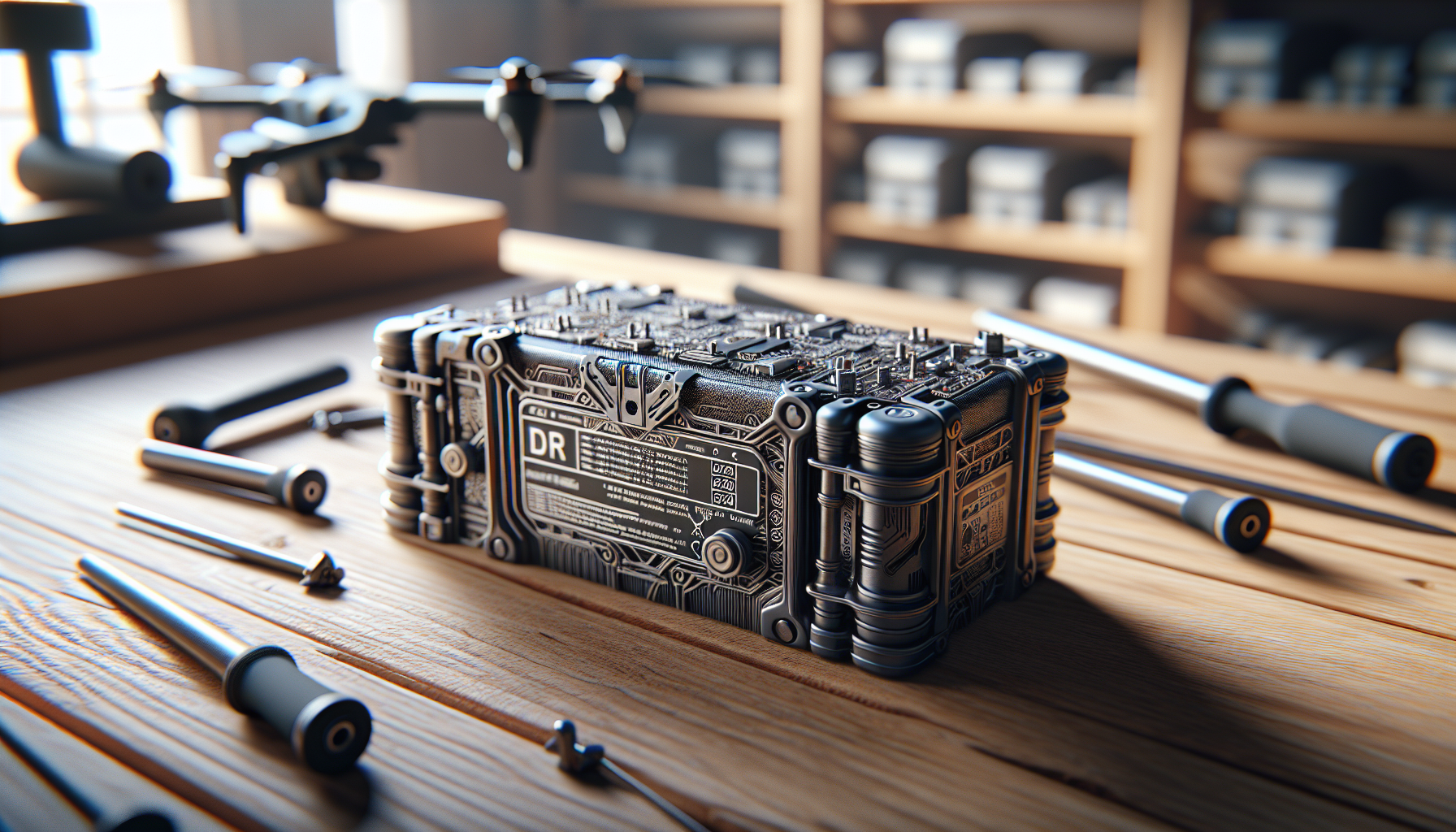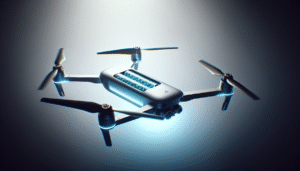Have you ever found yourself bewildered by the complex world of drone batteries and their enigmatic labels? Fear not, my friend, as we embark on this friendly journey together, deciphering the secrets of drone battery C ratings, voltage, and capacity with the ultimate goal of understanding them like a true professional. With me as your guide and a sprinkle of humor, we’ll unravel these mysteries one at a time.

Understanding Drone Batteries: The Basics
When it comes to flying drones, the battery is like the beating heart of the operation. Without a proper understanding of this vital component, your flying escapades might be short-lived or lackluster. Let’s dive into the essentials, beginning with the main components: C ratings, voltage, and capacity.
What Is a Drone Battery Made Of?
At its core, a drone battery is typically composed of lithium polymer (LiPo) cells. LiPo batteries are favored for their lightweight structure and high energy capacity, which are essential for keeping drones airborne for longer durations. Knowing the makeup of your battery lays the groundwork for understanding the technical specifications that follow.
Why Understanding Drone Battery Terms Is Important
Think of this as a language within a language—a code that, when cracked, allows you to make informed decisions about how you power your drone. Decoding these terms can lead to optimized performance, safer flights, and a more enjoyable drone experience overall.
Deciphering C Ratings
One of the most mystifying aspects of drone batteries is the C rating. Yet, once you grasp its meaning, you’ll feel like you’ve just uncovered the Rosetta Stone of drone power management.
What Are C Ratings?
The C rating of a drone battery is an indicator of how much current (measured in amperes) the battery can safely deliver. It might be displayed as a series of numbers and letters on your battery label. The ‘C’ is essentially a multiplier that tells you how much current the battery can provide over a sustained period without overheating or being damaged.
C Rating Example Table
| C Rating | Max Current Output | Performance Implication |
|---|---|---|
| 10C | 10 times battery capacity in amps | Moderate power, longer runtime |
| 20C | 20 times battery capacity in amps | Increased power for faster flights |
| 30C | 30 times battery capacity in amps | High power, reduced battery life |
How to Calculate Current Using C Ratings
Consider your battery capacity to be 2200mAh (milliamp hours), and let’s say it has a C rating of 20C. Simply multiply the capacity by the C rating, and convert mAh to Ah by dividing by 1000:
2200mAh × 20C = 44000mAh = 44A
That means the maximum safe continuous current the battery can deliver is 44 amps.
Why C Ratings Matter
Understanding C ratings helps you match the battery’s capabilities to the demands of your drone. High C ratings are typically sought after for racing drones that require more thrust and acceleration, while lower C ratings suffice for casual flying and photography drones with less strenuous power demands.

Voltage: The Power Behind the Propellers
Voltage is the force that pushes the electrical current through a circuit, driving the performance of your drone. Forgoing a sophisticated analogy, think of voltage as the “oomph” your battery provides to the drone motors.
What’s in a Volt?
Most drone batteries are either 3.7V single-cell or multiple-cell configurations that can range upwards of 14.8V or more. The more cells stacked together in series, the higher the total voltage, and subsequently, the more powerful the battery.
Common Voltage Configurations
| Cell Count | Voltage | Common Use Case |
|---|---|---|
| 1S | 3.7V | Micro drones, low power requirements |
| 2S | 7.4V | Small drones with slightly higher speed |
| 3S | 11.1V | Mid-range drones, good balance of speed and efficiency |
| 4S | 14.8V | Racing drones, high performance and speed |
How to Choose the Right Voltage
Matching the voltage of your battery to that of your drone’s specifications is crucial. Overvolting can fry the circuits and render the drone inoperable, while undervolting might leave you grounded before you get off the ground.
The Impact of Voltage on Drone Performance
Simply put, higher voltages can improve drone speed and climbing power. Yet, there’s a trade-off: a higher voltage often requires more sophisticated and expensive electronic speed controllers (ESCs) and motors, thereby increasing overall costs.
Capacity: The Drone’s Endurance
Capacity, measured in milliamp hours (mAh), is the total energy a battery can store. In simpler terms, it’s like the gas tank of your drone—dictating how far and how long you can fly before having to land and recharge.
What Does Capacity Tell You?
A higher mAh rating usually means more flight time and less frequent charging. However, this comes with extra weight, which could impact the drone’s agility and speed.
Capacity vs. Flight Time Table
| Capacity (mAh) | Approximate Flight Time |
|---|---|
| 1000mAh | 5-8 minutes |
| 2200mAh | 12-15 minutes |
| 5000mAh | 20-25 minutes |
Balancing Capacity and Performance
You’ll often face a balancing act between more capacity and added weight. Understanding your mission—be it long leisurely flights, high-speed racing, or aerial photography—will help you choose the right balance.
How to Measure for Optimal Capacity
Gauge the weight tolerance of your drone and consult the manufacturer’s specifications to ensure you don’t overload it with a heavy battery. Opt for a happy medium where you gain additional flight time without compromising agility or maneuverability.
Practical Tips for Drone Battery Selection
Now armed with knowledge on C ratings, voltage, and capacity, you can fine-tune your selection process and get the best battery for your flying needs. Here are some more nuggets of wisdom:
Matching Battery Specs to Your Drone
Ensure that the battery meets the drone’s manufacturer’s specifications: watch out for size requirements, connector types, and any voltage limitations. Mismatched components can lead to inefficiency or worse, inoperable equipment.
Consider Environmental Conditions
Batteries discharge differently based on temperature. Cold weather can reduce battery performance while heat can escalate risks like expanding cells. Plan for your environment by storing and using batteries appropriately.
Prioritizing Safety
Treat battery warnings and fire risks seriously. Overcharging, puncturing, or improper storage are common issues that can lead to battery damage and potential hazards. Always use the recommended charger and follow all safety precautions.
Maintaining Battery Life
- Storage Practices: Store batteries at a safe voltage (usually 3.85V per cell for LiPo).
- Charging Protocols: Do not leave batteries unattended when charging.
- Usage Capacity: Avoid full discharge to prolong battery life.
Final Words of Wisdom
Becoming adept at interpreting drone battery specs is akin to learning an ancient art form. Sure, it may seem daunting at first, but with diligence, you’ll soon find yourself making choices that maximize your drone’s potential. After all, in the grand arena of the skies, knowledge isn’t just power—it’s flight.
Remember to stay curious, prioritize safety, and most importantly, enjoy the soaring spectacle of each flight mission. With your newfound expertise, you’re now set to glide through the world of drone battery C ratings, voltage, and capacity like a bona fide professional—an exhilarating journey that could only be curtailed by a swift encounter with a particularly stubborn tree (not that I’d know anything about that).


